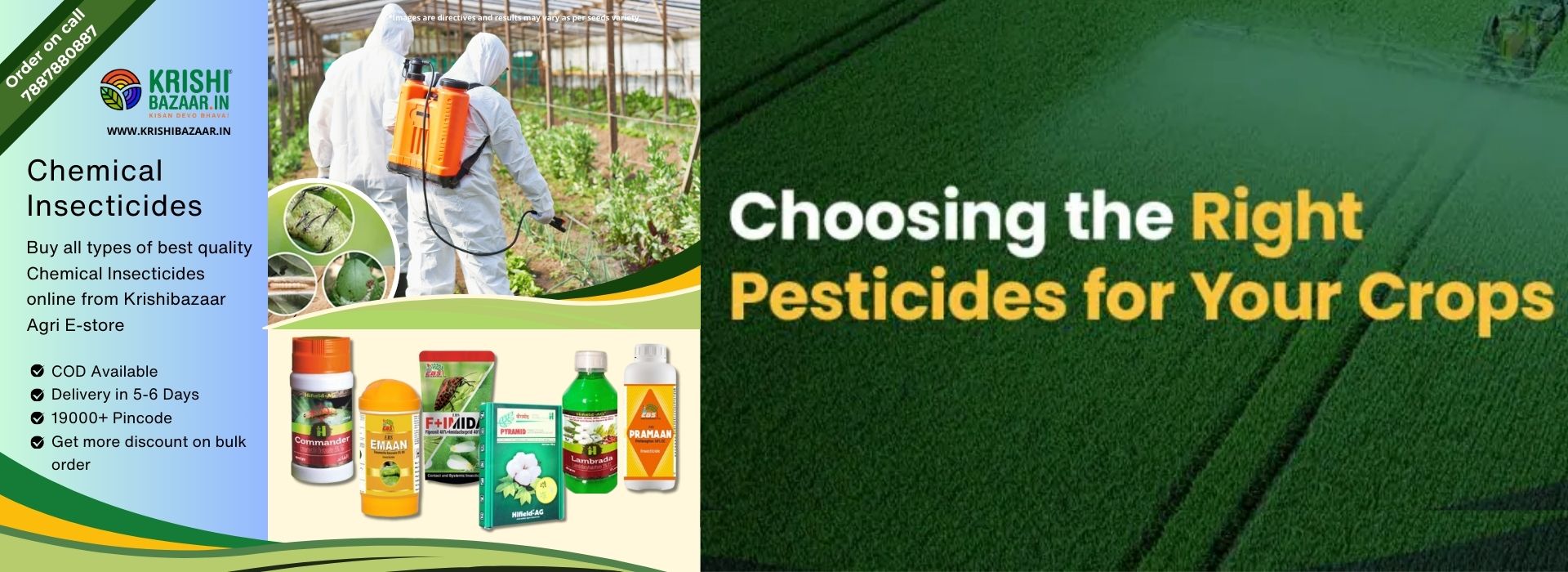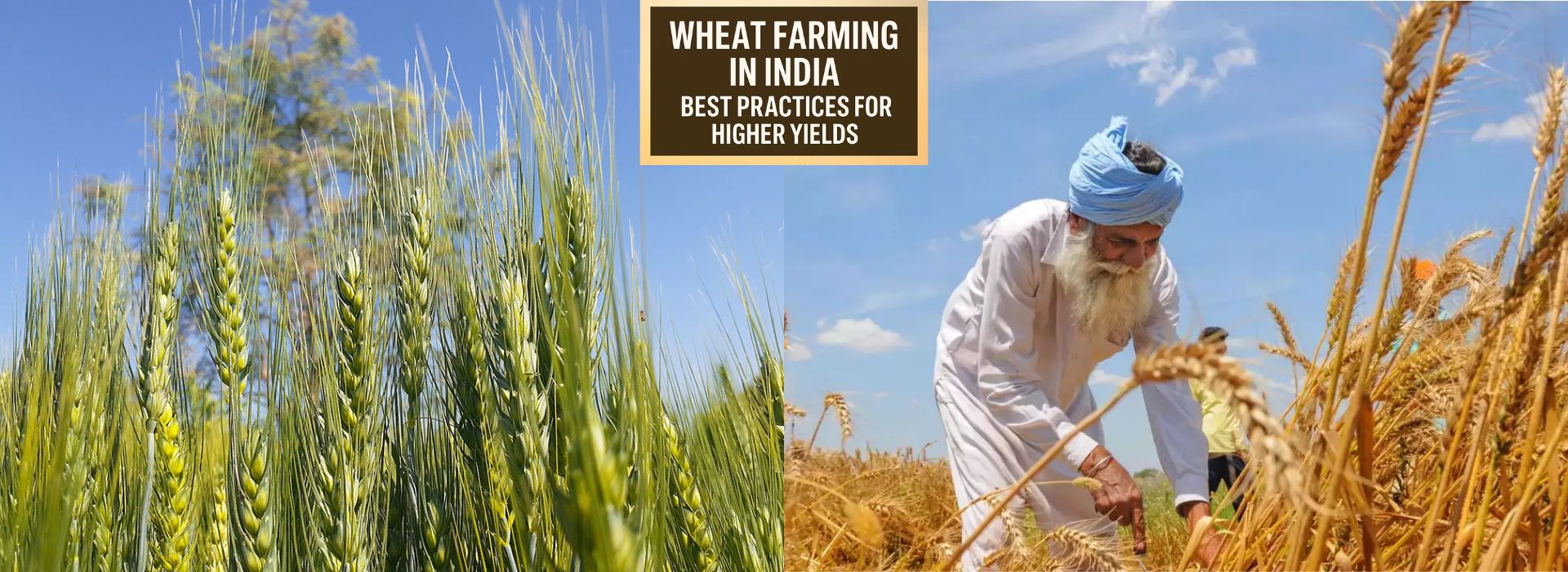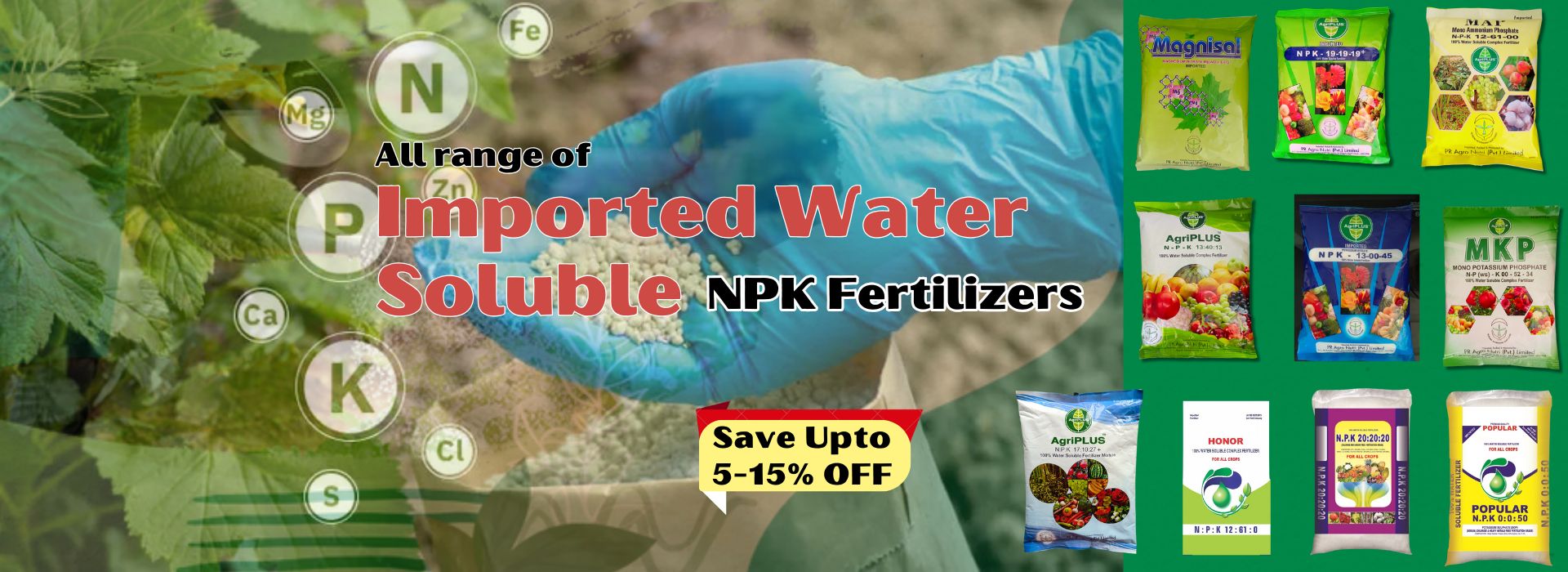Farmers' Guide: How to Pick the Perfect Insecticide for Your Crops
October 4, 2024Farmers'
Guide: How to Pick the Perfect Insecticide for Your Crops
Selecting
the right insecticide is a critical decision for any farmer. With so many
options available, it can be overwhelming to determine which product will best
suit your crop’s needs. The wrong choice can lead to poor pest control, crop
damage, or even environmental harm, while the right insecticide can safeguard
your crops and boost yields. This guide will walk you through key
considerations for choosing the perfect insecticide, ensuring both your crops
and your farm's ecosystem thrive.
Why
Choosing the Right Insecticide Matters
Pest
infestations can cause significant crop damage, reducing yields and affecting
the quality of your produce. Insecticides offer an effective solution for
managing pests, but their effectiveness depends on selecting the right one for
your specific needs. The right insecticide will:
- Target the
specific pests affecting your crop.
- Be safe for
your crop, farm environment, and nearby beneficial insects.
- Fit into
your pest management plan, ensuring sustainable farming practices.
By
understanding your crop’s pest profile, the type of insecticide available, and
how to use it properly, you can maximize protection and minimize risk.
Step-by-Step
Guide to Selecting the Right Insecticide
1.
Identify the Pests in Your Crop
The
first and most important step is identifying the pests attacking your crops.
Different insecticides target specific insects, so knowing the type of pest is
essential for effective control. Some common crop pests include:
- Aphids: Sap-sucking pests found on many crops.
- Caterpillars: Damage leaves and fruits of various
plants.
- Whiteflies: Known for damaging vegetables, cotton,
and fruit crops.
- Weevils: Attack grains, nuts, and legumes.
Consult
with local agricultural experts or use pest identification tools to properly
diagnose the pests in your fields.
2.
Understand the Type of Insecticide
There
are various categories of insecticides, each with different modes of action and
target pests. The main types include:
- Contact Insecticides: These
insecticides kill pests when they come into direct contact with the
chemical. They are useful for immediate control but may not be effective
for pests hidden under leaves or in soil.
- Systemic Insecticides: These are
absorbed by the plant and move through its tissues. When pests feed on the
plant, they ingest the insecticide and die. Systemic insecticides are
great for controlling sap-sucking pests like aphids and whiteflies.
- Biological Insecticides: Derived
from natural organisms like bacteria or fungi, these insecticides are
environmentally friendly and target specific pests without harming
beneficial insects. Examples include Bacillus thuringiensis (Bt), which is
effective against caterpillars.
- Insect
Growth Regulators (IGRs):
These disrupt the life cycle of pests, preventing them from maturing or
reproducing. IGRs are typically slow-acting but provide long-term pest
control.
Choose
an insecticide type that suits the specific pest problem in your crop,
considering both immediate control needs and long-term management.
3.
Evaluate the Insecticide’s Spectrum
Not
all insecticides are selective. Some may kill a broad range of insects,
including beneficial species such as pollinators (bees) and natural predators
(ladybugs).
- Broad-spectrum
insecticides: These are
powerful but can disrupt the farm’s ecological balance, potentially
leading to secondary pest outbreaks.
- Selective
insecticides: These
target specific pests, sparing beneficial insects and maintaining the
natural balance of your farm ecosystem.
If
you have beneficial insects that help control pest populations naturally, opt
for selective insecticides to minimize collateral damage.
4.
Consider Environmental Impact and Safety
Insecticide
use can have long-lasting environmental effects if not managed properly. Before
purchasing an insecticide, consider its environmental safety:
- Persistence: How long does the insecticide remain
active in the soil or on plants? Some insecticides can linger and cause
issues for future crops or contaminate water sources.
- Toxicity: Is the product safe for animals,
humans, and beneficial insects? Check the label for information on
toxicity and safety precautions.
Integrated
Pest Management (IPM) encourages using eco-friendly and sustainable
insecticides whenever possible. Biological and botanical insecticides are great
choices for minimizing environmental harm while controlling pests.
5.
Check Resistance Issues
Pests
can develop resistance to certain insecticides over time, especially when a
single product is used repeatedly. Rotating insecticides with different modes
of action helps prevent resistance buildup. Look for insecticides labeled with
different IRAC (Insecticide Resistance Action Committee) group numbers
and use them in rotation to extend the effectiveness of your pest management
strategy.
6.
Consult Local Agricultural Guidelines
Local
agricultural departments or extension services often provide valuable advice on
which insecticides work best for specific crops and pests in your area.
Consulting these resources can save you time and money, ensuring you use
insecticides proven to work in your region’s specific conditions.
Additionally,
some insecticides may be regulated or banned in certain regions. Make sure the
product you choose complies with local laws and guidelines.
Tips
for Effective Use of Insecticides
Once
you’ve selected the right insecticide, proper application is crucial for
maximizing its effectiveness:
- Follow Label
Instructions: Always
read and follow the product label carefully. It will provide essential
information on dosage, application methods, and safety precautions.
- Apply at the
Right Time: Timing is
critical. Apply insecticides when the pest population is at its most
vulnerable stage (e.g., larval stage for caterpillars). Also, avoid
spraying during windy conditions or when rain is expected.
- Use Proper
Equipment: Ensure
your spraying equipment is calibrated and in good working condition for
uniform application. This helps avoid under-dosing or over-dosing, which
can lead to poor pest control or crop damage.
- Monitor and
Adjust: Keep track
of pest populations after application. If pests persist, consult an expert
to evaluate whether additional treatments or a change in product is
necessary.
Conclusion
Selecting
the right insecticide is vital for protecting your crops from harmful pests
while maintaining a healthy farm ecosystem. By identifying the pests,
understanding different insecticide types, considering environmental impact,
and following local guidelines, you can choose a product that delivers optimal
results. Remember, effective pest control doesn’t just depend on the
insecticide itself but also on how and when it’s applied. With the right
approach, you can minimize pest damage and maximize your yields sustainably.
At krishibazaar.in, you can find and buy various agricultural products. For agricultural guidance on selecting the most suitable products for your crops, please contact or WhatsApp at +917887880887






Guest reviews
No reviews found for this Blog